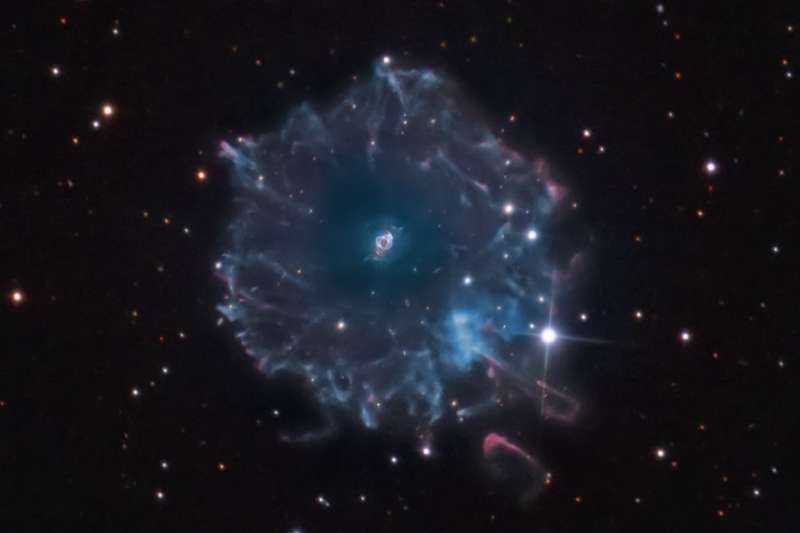 |
Астронет: Астрономическая картинка дня Гало вокруг Кошачьего глаза http://variable-stars.ru/db/msg/1269569/eng |
Credit & Copyright: Don Goldman
Explanation:
The Cat's Eye Nebula
(NGC 6543) is one of the best known planetary
nebulae in the sky.
Its haunting symmetries are seen
in the very central region of
this tantalizing image, processed to reveal the
enormous but extremely faint halo of gaseous material,
about 6 light-years across, which surrounds the brighter,
familiar planetary nebula.
Made with narrow and broadband data
the composite picture shows the remarkably strong extended emission from
twice ionized oxygen atoms in blue-green hues and ionized hydrogen
and nitrogen in red.
Planetary
nebulae have long been appreciated as a final phase
in the life of a sun-like star.
But recently many planetaries have been
found to have halos like this one, likely formed of material shrugged
off during earlier active episodes in the star's evolution.
While the
planetary
nebula phase is thought to last for around 10,000 years,
astronomers estimate the age of the
outer filamentary
portions of this halo to be 50,000 to 90,000 years.
Authors & editors:
Robert Nemiroff
(MTU) &
Jerry Bonnell
(USRA)
NASA Web Site Statements, Warnings,
and Disclaimers
NASA Official: Jay Norris.
Specific
rights apply.
A service of:
LHEA at
NASA /
GSFC
& Michigan Tech. U.
